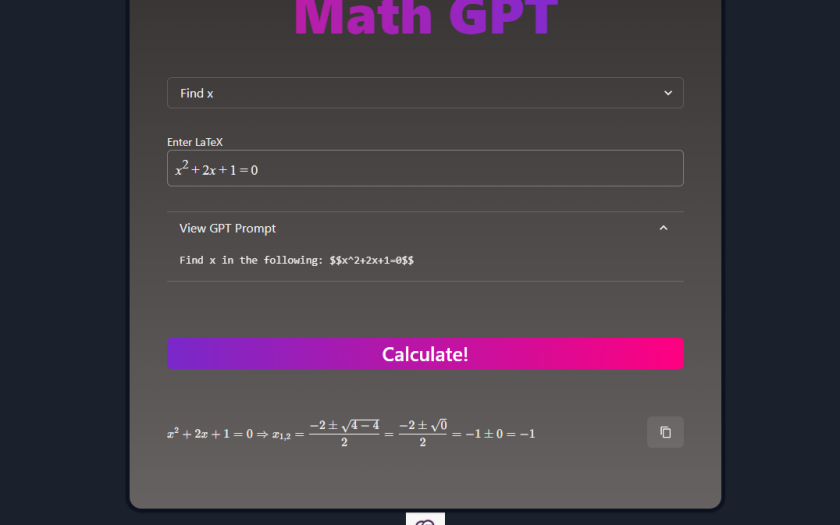In the realm of artificial intelligence, the integration of machine learning models into various disciplines has sparked remarkable advancements. One such domain experiencing a transformative shift is mathematics, thanks to innovations like math gpt. Developed on the foundation of OpenAI’s GPT architecture, MathGPT represents a specialized variant tailored to tackle complex mathematical tasks with unprecedented efficiency and accuracy.
Understanding MathGPT
MathGPT harnesses the power of deep learning to handle diverse mathematical challenges, ranging from symbolic calculations to solving intricate equations. Built upon extensive datasets and trained using advanced algorithms, MathGPT exhibits proficiency in domains traditionally reserved for human mathematicians. Its ability to interpret and generate mathematical expressions makes it a versatile tool for researchers, educators, and enthusiasts alike.
Key Features and Applications
1. Symbolic Computation
MathGPT excels in symbolic computation, enabling it to manipulate algebraic expressions, simplify equations, and derive solutions across various mathematical disciplines. This capability extends to calculus, linear algebra, and beyond, facilitating rapid problem-solving and theorem verification.
2. Mathematical Modeling
By leveraging deep learning techniques, MathGPT can analyze complex datasets, identify patterns, and formulate mathematical models. This functionality proves invaluable in fields such as statistics, optimization, and predictive analytics, where data-driven insights drive decision-making processes.
3. Educational Support
In educational settings, MathGPT serves as a dynamic resource for students and instructors. It provides interactive tutorials, step-by-step solutions, and real-time feedback on mathematical queries, fostering deeper understanding and engagement in learning mathematics.
4. Research Advancements
Researchers benefit from MathGPT’s capacity to explore uncharted mathematical territories, propose conjectures, and validate hypotheses. Its ability to generate novel insights accelerates the pace of discovery in theoretical mathematics and computational sciences.
Future Outlook
As AI continues to evolve, MathGPT represents a glimpse into the future of mathematical innovation. Enhancements in model architecture, data accessibility, and computational efficiency promise further advancements in problem-solving capabilities and domain-specific applications.
Conclusion
MathGPT stands at the forefront of AI-driven advancements in mathematics, bridging the gap between theoretical concepts and practical applications. By integrating cutting-edge technology with mathematical prowess, it reshapes how mathematical problems are approached and solved across diverse fields. Embracing MathGPT heralds a new era of mathematical exploration and discovery, empowering users to unlock new insights and push the boundaries of mathematical knowledge.
In essence, MathGPT signifies not just a tool, but a catalyst for transformative change in the realm of mathematics—an innovation poised to redefine what’s possible in the pursuit of mathematical excellence.
